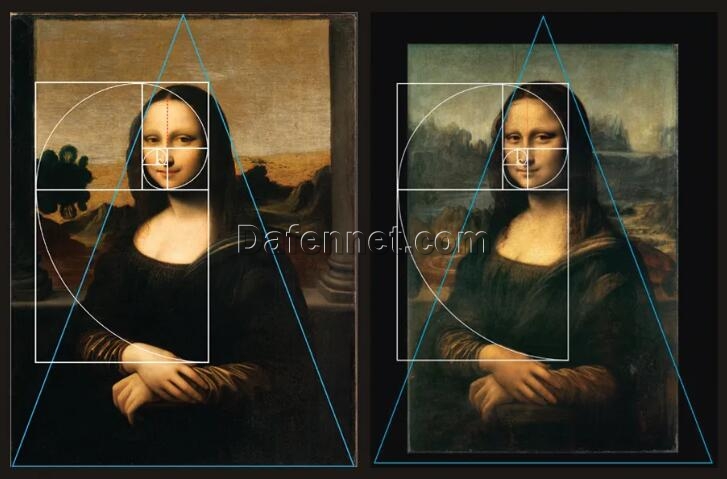Oil Painting Info
Exploring the Hidden Narratives in Historical Artworks
Art serves as one of humanity’s most effective tools for expressing and sharing experiences, thoughts, and emotions. Throughout history, artists have used their works as a means of communication, conveying their perspectives on the world. Sometimes these messages are overt, but often they are concealed, awaiting discovery by keen observers.
This collection of five paintings reveals the hidden narratives embedded within some of history’s most iconic artworks. From subtle symbols to barely perceptible images, these concealed elements unveil fascinating stories.
Decoding these underlying messages enriches our appreciation of the artists’ creativity and connects us with the past, revealing the thoughts and intentions behind these masterpieces.

- The Last Supper by Leonardo da Vinci One of history’s most discussed paintings, “The Last Supper,” painted between 1495 and 1498, depicts the moment Jesus announced that one of his disciples would betray him. Beyond its biblical perspective, the painting harbors several hidden meanings. In 2007, Italian musician Giovanni Maria Pala discovered a musical score embedded within the arrangement of bread rolls and hands, readable from right to left, reflecting Da Vinci’s mirror-writing habit. This hidden melody adds a layer of mystique, merging painting with music. Additionally, scholars suggest the apostles’ poses might represent a mathematical puzzle or convey astrological significance, reflecting Da Vinci’s fascination with science and the cosmos. According to Vatican researcher Sabrina Sforza Galitzia, Da Vinci also encoded a prediction within “The Last Supper” of a great flood that would drown the world from March 21, 4006, to November 1, lasting 224 days.

- Madonna with Saint Giovannino Attracting UFO enthusiasts, “Madonna with Saint Giovannino,” created by Domenico Ghirlandaio in the 15th century, appears at first glance to depict the Virgin Mary and child Jesus. However, a closer look reveals a peculiar object resembling a cloud in the top right corner of the painting. This UFO-like object emits strange lights, and below it, a man and his dog gaze up in awe. Some interpretations suggest that Mary is attempting to shield the children from viewing the flying saucer. This painting is not the only Renaissance artwork depicting mysterious floating objects, prompting questions about whether our ancestors might have interacted with extraterrestrial beings or if these depictions symbolize divine or supernatural phenomena.

- Arnolfini Portrait by Jan van Eyck Created in 1434, the “Arnolfini Portrait” is one of the early Renaissance’s most famous and debated artworks. Supposedly depicting the wealthy couple Giovanni di Nicolao Arnolfini and his wife Costanza Trenta—who never had children and who died a year before the painting’s completion—the woman appears pregnant, leading to speculation that Costanza might have died in childbirth. The convex mirror in the background features the couple and two other figures, one believed to be the artist himself, as evidenced by the inscription “Jan van Eyck was here 1434.” Symbols of marriage and fidelity, such as the single lit candle on the chandelier and the dog at the couple’s feet, contrast with symbols of death, like the extinguished candle above Costanza, adding layers of mystery to the portrayal of life, death, and art.

- The Old Fisherman by Tivadar Csontváry Kosztka Painted in the early 20th century by Hungarian artist Tivadar Csontváry Kosztka, “The Old Fisherman” seems at first a simple depiction of a man by the sea. However, the painting’s secret comes alive through mirroring. When the left side is mirrored, a peaceful scene unfolds: the fisherman sits calmly in his boat praying. This scene emphasizes peace, faith, and the connection with nature. The humble and devout fisherman reflects an inner peace and spirituality. Conversely, when mirrored on the right side, a completely different image appears, featuring a demonic figure against a tumultuous sea, contrasting sharply with the peaceful image on the other side. This duality represents the conflict between good and evil, a common theme in Kosztka’s works. The hidden images in “The Old Man and the Sea” exemplify how an artist can depict an entirely different story within the same painting, leaving the discovery to the viewers.

- Mona Lisa by Leonardo da Vinci Perhaps the most famous portrait in art history, the “Mona Lisa” was created between 1503 and 1506. High-resolution scans of the painting have revealed tiny letters and numbers in Mona Lisa’s eyes. The right eye contains the initials “LV,” perhaps signifying Da Vinci’s own name, while the symbols in her left eye remain unidentified. Theories about the identity of the woman known as Mona Lisa vary. Some believe she was Lisa del Giocondo, buried beneath a convent in Florence. Others speculate that the painting depicts Da Vinci’s mother, Caterina, possibly a Chinese or Middle Eastern slave. Researchers also suggest that the subject might have been pregnant, based on her hand positioning, while others think she could have been a courtesan, as indicated by her lack of facial hair—a trait unlikely to be removed by high-status women of the time.
These artistic explorations into the symbols within famous paintings allow us to transcend the aesthetic aspects of art. By studying these works, we uncover the hidden intentions, thoughts, emotions, and messages the artists wished to convey. Each deep detail opens new ways to understand art and its creators.








